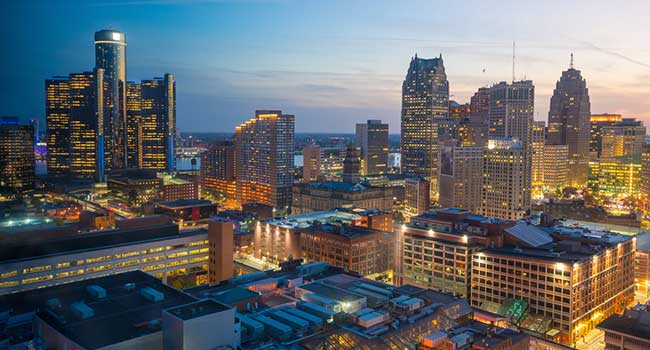
Detroit Looking to Boost Surveillance Infrastructure
Detroit is pumping millions of dollars into its surveillance networks, hoping to cut down on crime in the city.
- By Sydny Shepard
- Mar 20, 2019
The City of Detroit will soon be working on an expansion of their surveillance network with the addition of millions of dollars worth of security cameras, viewing stations and programs to cut down on crime.
The plan, which was unveiled by Detroit Mayor Mike Duggan, would link 500 traffic cameras to the Project Green Light system—a major ramp up for the 3-year-old program—as well as allow $3 million in bonds to be spent to set up a first round of roadside cameras and two additional mini Real Time Crime Centers, a location where the footage can be viewed by those authorized.
An additional $9 million in federal and state transportation funds will go toward putting 400 streaming cameras at intersections throughout the city. The cameras are designed to monitor traffic trends, but police will be allowed to pull footage if needed in a case.
Duggan hopes that the expansion plans will help in reducing crime and helping Detroit police catch suspects.
"If you're engaged in a shoot, you're engaged in a carjacking, we're going to track you," Duggan said. "We will get shots of the perps as they go pass and we'll be able to chase them down. We're going to make people make different decisions."
Many residents of Detroit wonder if the expansion plan for surveillance cameras makes a difference in the crime rate for the city. City officials and Detroit police can point to at least three specific occasions in the last year where green light cameras were able to capture high-definition footage of suspects in an open case.
When asked about the frequency of these particular events, Detroit Police Chief James Craig could only say it was "definitely not in the hundreds."
The city will be putting together a proposal to limit those who can access the footage and how long it will be stored for. The city said that so far, only the Detroit Police Department is using it, and Project Green Light's memorandum of understanding with its business partners suggests the footage is only stored for 30 days.
About the Author
Sydny Shepard is the Executive Editor of Campus Security & Life Safety.